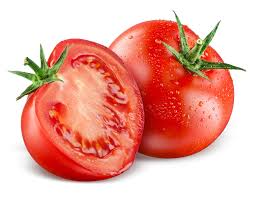SEED EXTRACTION IN TOMATO AND BRINJAL
Seed is a basic ingredient for existence, survival, perpetuation and multiplication. Seed comprises one of the most important inputs for crop production. Quality seed plays a vital role in maximising the production and productivity of crops.
Tomato :
Seed production of tomato can be undertaken in any part of the country. It is a self pollinated crop and an isolation distance of 50 and 25m should be maintained for foundation and certified seeds. Before and after flowering, the seed production field is inspected for removing off types. Also virus affected plants should be removed whenever observed in the crops. The cultivators and the vegetable gardeners can very well produce their own seed rather than depend on seedsmen or nurserymen for their supply The following methods are given to extract tiny seeds from the slimy mass of tomato.
1) Fermentation method :-
This method is employed when tomato fruits are generally not very big and they possess a large number of seeds, In this method, the fruits selected for seed are completely lost and nothing can be used as food or otherwise. The selected ripe fruits are harvested from the plants and allowed to ripe further for a day or two in heap or in an earthen pot.
They are then crushed well in an earthen pot by hand or by any mechanical method to make a paste, No, fruit juice should be allowed to drain out, Now the entire mass is kept in the vat for a day or two to ferment. It may be complete in 1 to 2 or more days according to high or low temperature. Profuse foam formation on the top and no:
with the wooden adhering of seed tomato flesh on the stick or hand, indicates that the fermentation is complete, Now the flesh will float on the top, while the seeds will settle down at the bottom of the vat. Remove all the fermented mass on the top and then decant off gently all the liquid.
The seeds resting on the bottom of the vat are collected and washed 8-10 times with clean water and then they are spread in the sun to become dry. When they are perfectly dry in the run; store them in airtight containers in a cool dry place. It is the simplest method and can be adopted by any layman. They should not be left too long. otherwise they may germinate in it.
2) Alkali treatment method :-
When fruits are big enough but the number of seeds is less, we adopt this method. Cut the selected ripe fruits into halves and then scoop out the slimy mass containing the seeds into an earthen or porcelain vessel with the help of the handle of a stainless steel tea spoon or wooden stick. The flesh thus reported can be easily used for eating raw or for any other purpose. Treat the slimy mass with an alkali mixture (150 gm of ordinary washing soda is added to 5 lit. of boiling water) in equal volumes.
When the alkali mixture is cooled, allow it all to stand over night in an earthen or porcelain vessel, Next day, all the seeds will settle down at the bottom of the container. Now decant off the clear liquid at the top. Seeds thus obtained are washed thoroughly with clear water and allowed to dry in the sun and are preserved.
3) Quickest method or acid treatment method :-
This method is followed where seed production is done on large scale. It can also be adopted on the home scale, In this method too, the flesh of the fruit can be saved. Slimy seed mass is separated and kept in an earthen or a porcelain or glass vessel. This is then treated with commercial hydrochioric acid in the proportion of 30 ml of fluid per 12 kg of the material. The seeds are separated from the slimy mass within 15-30 minutes,
if acid is thoroughly mixed. The acidified liquid is then decanted off and the seeds remaining at the bottom are immediately washed well with clear water and allowed to dry in the sun. They are then preserved as usual. In this method the seeds can be extracted and dried on the same day and any discolouration of seeds, resulting from the fermentation process is entirely eliminated. There is also no possibility of seed germination during this process.
Brinjal :-
It is a self pollinated crop but cross pollination to some extent does take place through insects. To get pure seeds, an isolation distance of 100 and 200 m in certified and foundation seed plots respectively should be maintained. Three rogueings are done before flowering, after flowering and at the time of fruiting and off types are removed.
At ripening, the fruit become light yellow in colour and at this stage they are harvested. The outer covering is peeled off & the flesh with seeds is cut into thin slices, In hard skinned cultivar like Purple cluster selection, both the basal and the upper portion of the fruit which constitute the seed free zones are chopped off and the remaining portion is used.
The sliced materials are stored over night so that the seed after washing with water and sieving in the morning can be dried during the day. The washing should 37 always be done in the morning hours so that the seed is at least half dried till the evening OF otherwise there is a danger of its germination.
The seeds should be dried in partial shade to a moisture content of 8% or below. Acid extracted seeds of brinial ev. Co-1 were conditioned to 8%' moisture content and graded into sinkers and floaters by the water floatation method i.e., the seeds that sank were of better quality than those floated. The dried seeds are stored in air tight container. The average seed vield is 100-120 kg/ha.



